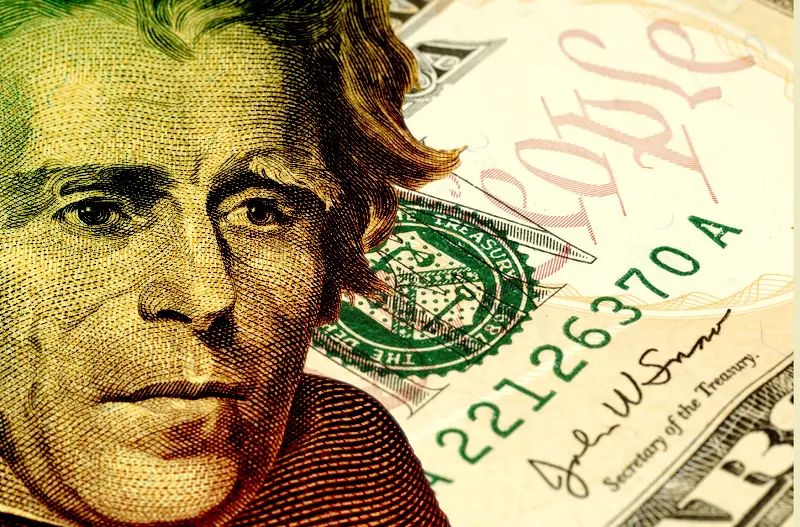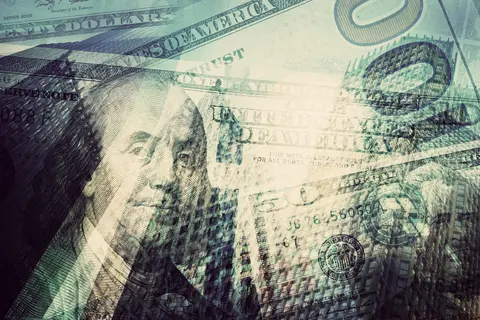
Andrew Jackson from US currency illustrating the excessive savings described in Keynesian Theory
Understanding Keynesian Theory of Excessive Saving
The Paradox of Thrift
Keynes introduced this idea in his 1936 book The General Theory of the Economy. The Paradox of Thrift looks at people’s saving behaviour and demonstrates how excessive saving can throw an economy further into a recession. This theory is not original to Keynes, but he popularized it — and it certainly was pertinent to the time when Keynes was alive.
To Save or Not to Save? — That is the Question.
Keynes witnessed The Great Depression of 1930, which was one of the worst recessions to hit the Western world. So it’s easy to see how this period influenced his economic thinking about spending.
When a recession hits, a significant portion of the populace becomes unemployed and is forced to save and plan for financial hardship. According to Keynes, this behaviour doesn’t do the economy any good. When an economy is in recession, we should be spending more and taking more risks — and not saving as much.
Why? Because spending power is what drives an economy. If consumers aren’t purchasing enough of one product because they are saving, a manufacturer will make less of that product. When a manufacturer makes less of a product, they don’t need as many workers. This results in lay-offs, more saving, etc. Less aggregate demand equals less economic power.
The Circular Flow Model
Ultimately, the Paradox of Thrift results in Keynes’s Circular Flow Model. The model works in contrast to the Paradox. Instead of looking at how saving affects an economy, it explains the flow of spending.
The model says to spend more now is to spend more later. Reduce saving and encourage spending by cutting saving interest rates. Spending more means companies have more money to open new factories, create new jobs, provide more income, which results in more spending. This is the key to a robust nation.
Critics of the Paradox
Keynes’ theory makes perfect sense so far, but there are always naysayers. Critics of Keynes’ Paradox and the circular flow model say that the theory ignores two things:
- Capital goods investments, which are required before consumers can spend anything.
- Inflation and deflation of prices.
This is part of Say’s Law. What you save is invested in a nation. Savers and investors are essentially the same groups. The greater the savings, the greater the economy; too much spending could result in its downfall. Additionally, investing in capital goods increases the overall production of goods and encourages banks to hand out more loans. More loans will make up for the loss of income during a recession and increase spending.
Keynes rebutted this classicist theory. He added onto his Paradox of Thrift, distinguishing between the two groups. For him, saving is what is leftover from consumer spending. In other words, when you receive income, it has a flow of spending that helps keep the economy going. Saving is one part of income that is no longer a part of this flow.
The formula for Keynesian saving is S = Y(1–t) – C.
- S = saving
- Y = output
- C = consumption
Investment is when you acquire capital goods. Keynes also claimed that the saving of the individual is not the saving of the community — what is good for the individual is not good for the whole. Therefore, community spending should not decrease during a recession.
Applying the Theory
There are plenty of real-world examples of the Paradox of Thrift just by examining different periods of recession. In 2008, the United States hit a financial crisis that increased household savings by almost 2%. The Great Recession that followed led to significant lifestyle changes, including living arrangements for young adults.
From 2005 to 2011, 25-29-year-olds living with their parents increased by 5%. This cost the American economy about $25 billion per year. Households and individuals trying to save money took money out of circulation (or rather, the flow of income). The “excessive” saving here, you could argue, actually slowed down the housing market and anything related to individuals living in the short term.
In a hypothetical example, we can look at the Paradox of Thrift on a smaller scale. In an attempt to save up for a new car, I’m cutting my take out expenses. I’m spending less on local restaurants and cooking at home more. This is a great decision for my household. But, that $30 every couple of days going into the local economy is no longer there.
Now, if every household did this, how would it affect the success of local businesses? My $30 may not make much of a difference, but it adds up if you have 100,000 citizens holding back. Because restaurants already operate at a smaller profit margin, the loss in money could result in them laying off employees, which means more people have less money to spend. In turn, they start saving more, eating out less, which affects restaurants even more, until eventually, the restaurant would have to close its doors.
In these scenarios, it may come off as a slippery-slope fallacy. But it demonstrates how demand — consumption and spending — drives the economy.
Final Thoughts
As individuals, we are told by family, friends, and professionals to save. Save for your future, save for a rainy day, save for a new house. But do they ever tell us to spend to keep the economy afloat? They may not, but the government does.
Keynes’s Paradox of Thrift creates transparency for our economies that even now, with all the stimulus checks our governments are sending out, shows us that governments want us to spend money. They want us to spend because the consumers keep the economy going. And if we have the money to do so, we will.
But what do you think? Do you agree with Keynes that excessive saving during a recession will further throw a country into economic darkness? Or are you a Say’s Law believer, agreeing that saving is investing in our economy?
It’s a question worth spending some time on.

